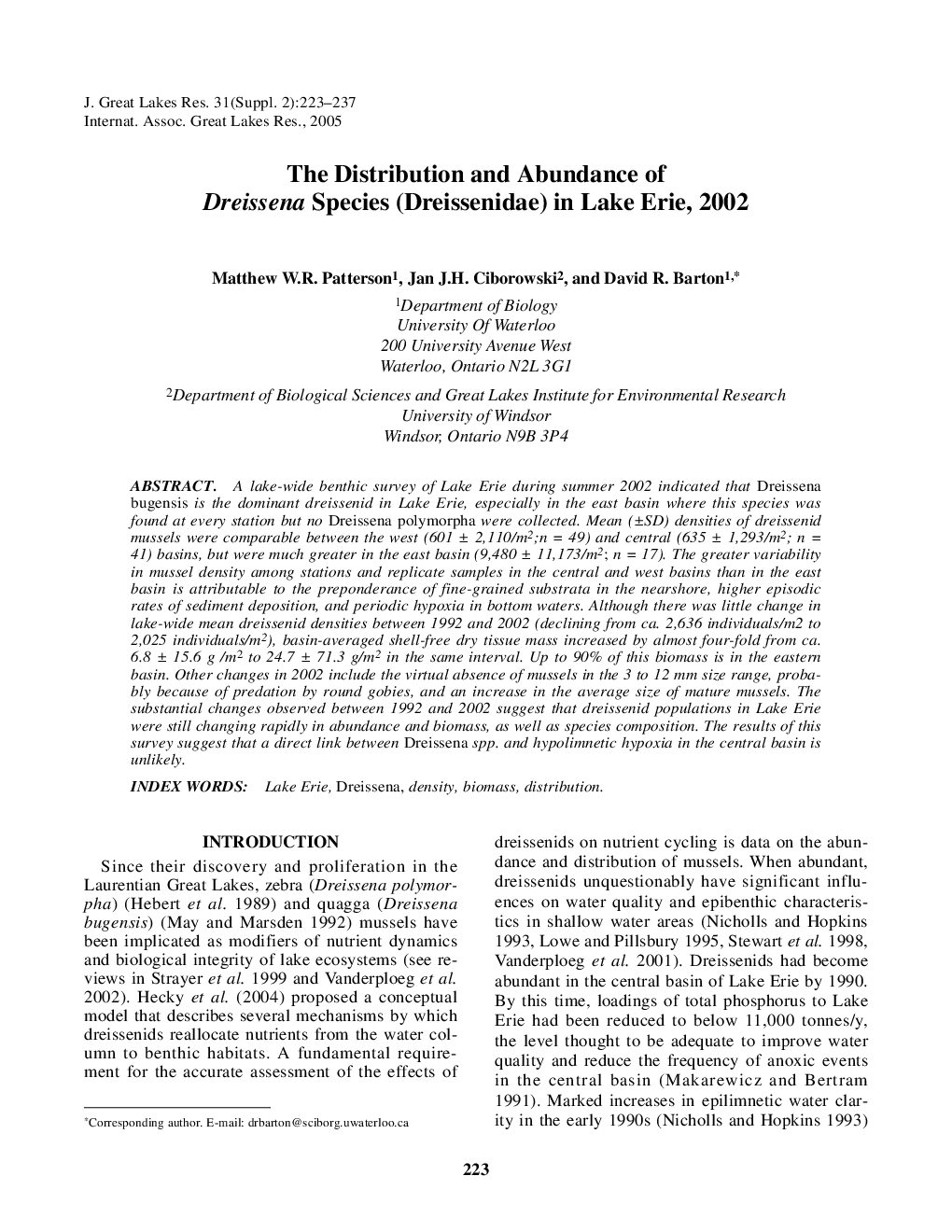| Article ID | Journal | Published Year | Pages | File Type |
|---|---|---|---|---|
| 9450251 | Journal of Great Lakes Research | 2005 | 15 Pages |
Abstract
A lake-wide benthic survey of Lake Erie during summer 2002 indicated that Dreissena bugensis is the dominant dreissenid in Lake Erie, especially in the east basin where this species was found at every station but no Dreissena polymorpha were collected. Mean (±SD) densities of dreissenid mussels were comparable between the west (601 ± 2,110/m2;n = 49) and central (635 ± 1,293/m2; n = 41) basins, but were much greater in the east basin (9,480 ± 11,173/m2; n = 17). The greater variability in mussel density among stations and replicate samples in the central and west basins than in the east basin is attributable to the preponderance of fine-grained substrata in the nearshore, higher episodic rates of sediment deposition, and periodic hypoxia in bottom waters. Although there was little change in lake-wide mean dreissenid densities between 1992 and 2002 (declining from ca. 2,636 individuals/m2 to 2,025 individuals/m2), basin-averaged shell-free dry tissue mass increased by almost four-fold from ca. 6.8 ± 15.6 g /m2 to 24.7 ± 71.3 g/m2 in the same interval. Up to 90% of this biomass is in the eastern basin. Other changes in 2002 include the virtual absence of mussels in the 3 to 12 mm size range, probably because of predation by round gobies, and an increase in the average size of mature mussels. The substantial changes observed between 1992 and 2002 suggest that dreissenid populations in Lake Erie were still changing rapidly in abundance and biomass, as well as species composition. The results of this survey suggest that a direct link between Dreissena spp. and hypolimnetic hypoxia in the central basin is unlikely.
Related Topics
Physical Sciences and Engineering
Earth and Planetary Sciences
Earth and Planetary Sciences (General)
Authors
Matthew W.R. Patterson, Jan J.H. Ciborowski, David R. Barton,
